California Bush Anemone Carpenteria californica 'Elizabeth'
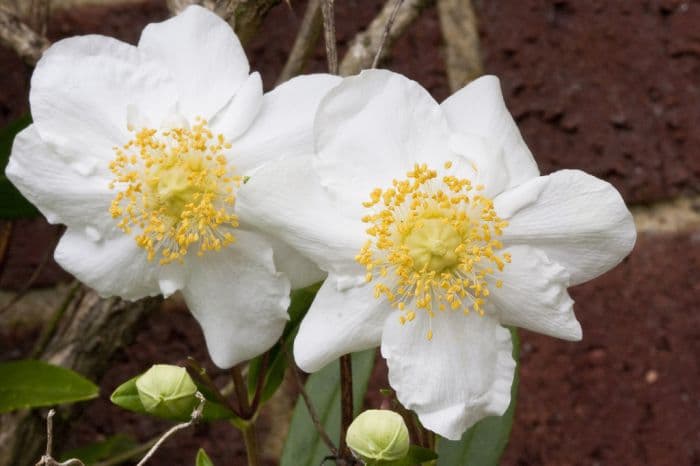
ABOUT
Carpenteria californica 'Elizabeth', commonly known as Elizabeth bush anemone, is an ornamental shrub notable for its showy and fragrant flowers. The blossoms of this beautiful plant are typically large, with a snowy white hue, and centered with a cluster of bright yellow stamens that add a delightful contrast. The flowers, which have a silky texture, are cupped in shape and emit a sweet scent that can attract pollinators as well as the admiration of gardeners. The Elizabeth bush anemone has a tidy, bushy form with evergreen leaves that remain on the plant throughout the year. These leaves are dark green, glossy, and lance-shaped, providing a lush background that accentuates the brilliance of the white flowers. The foliage has a leathery quality, contributing to the overall hardy appearance of the shrub. In addition to its attractive foliage and blossoms, the plant may also produce fruit. However, these are not particularly ornamental and are more of interest to wildlife than gardeners. Overall, the Elizabeth bush anemone is prized for its aesthetic appeal, with its flowers being the highlight that makes this plant a standout in a garden setting.
About this plant
 Names
NamesFamily
Hydrangeaceae.
Synonyms
Elizabeth Bush Anemone, California Carpenteria, Tree Anemone.
Common names
Carpenteria californica 'Elizabeth'.
 Toxicity
ToxicityTo humans
Bush Anemone (Carpenteria californica 'Elizabeth') is not widely known to be toxic to humans. There is limited information on the toxicity of this plant, suggesting that it is not commonly associated with poisoning symptoms or adverse effects when ingested. However, as with any plant, individual sensitivities can vary, and it is generally recommended to avoid consumption of plants not known to be safe for human consumption.
To pets
Bush Anemone (Carpenteria californica 'Elizabeth') is not widely regarded as toxic to pets. Information specific to the toxicity of this plant in domestic animals is scarce, implying that it is not traditionally recognized as a source of poisoning. Nonetheless, individual animals may react differently to plant material; thus, it is wise to prevent your pets from ingesting plants that are not verified as safe for animal consumption to circumvent any potential adverse reactions.
 Characteristics
CharacteristicsLife cycle
Perennials
Foliage type
Evergreen
Color of leaves
Green
Flower color
White
Height
6 feet (1.8 meters)
Spread
4 feet (1.2 meters)
Plant type
Shrub
Hardiness zones
8
Native area
California
Benefits
 General Benefits
General Benefits- Ornamental Appeal: The Carpenteria californica 'Elizabeth', also known as the Bush Anemone, has attractive, white flowers and a pleasing form that adds aesthetic value to gardens.
- Drought Resistance: Once established, the Bush Anemone is known for its drought tolerance, making it suitable for water-efficient landscapes.
- Wildlife Attraction: The fragrant, nectar-rich flowers are attractive to bees and other pollinators, supporting local ecosystems.
- Low Maintenance: This plant requires minimal care once established, making it an easy addition for gardeners of all levels.
- Evergreen Foliage: The Bush Anemone maintains its leaves throughout the year, providing continuous greenery.
- Nativity: As a plant native to California, it is adapted to local climates and supports regional biodiversity.
- Soil Adaptability: It can adapt to a variety of soil types, provided they are well-drained.
- Sun Tolerance: The plant is capable of thriving in full sun, making it versatile for different garden locations.
- Privacy Screening: When planted in groups, it can provide a dense screen for increased privacy in garden settings.
 Medical Properties
Medical PropertiesThis plant is not used for medical purposes.
 Air-purifying Qualities
Air-purifying QualitiesThis plant is not specifically known for air purifying qualities.
 Other Uses
Other Uses- Carpenteria californica 'Elizabeth', commonly known as Bush Anemone, can be used in sensory gardens for its fragrant flowers which provide a sensory experience through smell.
- The plant's dense form makes it a natural choice for creating privacy screens or hedges in residential landscaping.
- Bush Anemone's sturdy branches can serve as a natural support structure for climbing plants or vines that require minimal support.
- The long-lasting flowers of the Bush Anemone make it suitable for cut flower arrangements, adding elegance and fragrance to bouquets.
- Due to its tolerance for drought and ability to thrive in low-water landscapes, Bush Anemone is often incorporated into xeriscaping designs.
- Its evergreen nature ensures that the Bush Anemone can be used as a year-round focal point in gardens, maintaining visual interest even in winter.
- When planted near vegetable gardens, the Bush Anemone can attract pollinators, which are beneficial for the pollination of fruits and vegetables.
- The plant's resistance to deer browsing makes it an ideal choice for gardens in areas where deer are a common problem.
- The Bush Anemone can be used in coastal gardens as it can tolerate seaside conditions, such as salt spray and sandy soils.
- Its white flowers provide a contrast against darker foliage plants, helping to brighten shaded areas in a garden landscape.
Interesting Facts
 Feng Shui
Feng ShuiThe California bush anemone is not used in Feng Shui practice.
 Zodiac Sign Compitability
Zodiac Sign CompitabilityThe California bush anemone is not used in astrology practice.
 Plant Symbolism
Plant Symbolism- Rarity: The Carpenteria californica, commonly known as the Bush Anemone, is a rare plant native to California, symbolizing uniqueness and preciousness.
- Purity: Bush Anemone flowers are often pure white, which is commonly associated with innocence and purity.
- Beauty: With its attractive flowers, the Bush Anemone represents beauty and aesthetic appreciation.
- Resilience: As a plant that thrives in its native Californian habitat, it symbolizes the ability to endure and adapt to one's environment.
 Water
WaterElizabeth bush anemone should be watered regularly, especially during its first growing season to establish a deep, extensive root system. Once established, reduce frequency; this plant is quite drought tolerant. Nonetheless, during dry spells, it is advisable to water deeply every two to three weeks, providing about 1-2 gallons per plant each time, making sure the soil is moistened but not waterlogged. During the winter when the plant is dormant, watering can usually be curtailed significantly unless there are extended dry periods.
 Light
LightThe Elizabeth bush anemone thrives in full sun to partial shade. The ideal spot for planting is where it can receive at least six hours of direct sunlight daily, although it can tolerate some light dappled shade, especially in the hotter parts of its range. Avoid placing it in deep full shade as this can inhibit its flowering and overall vitality.
 Temperature
TemperatureThe Elizabeth bush anemone does well in a range of temperatures but prefers a temperate climate. It can tolerate minimum winter temperatures down to about 20 degrees Fahrenheit, but frost can damage the foliage. The ideal temperature range for this plant is between 60 and 75 degrees Fahrenheit. It is not suited for extreme cold or heat, which means it may struggle in regions where temperatures often drop below 20 degrees or exceed 90 degrees Fahrenheit.
 Pruning
PruningPruning the Elizabeth bush anemone should be done to maintain its shape, remove any dead or damaged wood, and encourage flowering. The best time to prune is in late winter or early spring, just before new growth starts. Prune sparingly, cutting back to just above a set of leaves or a branch junction. It generally only needs light pruning once a year to keep it looking tidy and to promote a more compact, floriferous plant.
 Cleaning
CleaningAs needed
 Soil
SoilBush anemone thrives in well-draining soil with a slightly acidic to neutral pH of 6.0 to 7.5. A mix of loam, sand, and organic compost is ideal to ensure proper drainage and nutrient availability.
 Repotting
RepottingBush anemone doesn't require frequent repotting; do it once every 2 to 3 years, preferably in spring, only if the plant has outgrown its pot.
 Humidity & Misting
Humidity & MistingBush anemone prefers moderate ambient humidity but is quite adaptable and can tolerate the dry air typical of indoor environments.
 Suitable locations
Suitable locationsIndoor
Place bush anemone in bright, indirect light and well-draining soil mix.
Outdoor
Plant bush anemone in partial shade with well-draining soil.
Hardiness zone
8-10 USDA
 Life cycle
Life cycleCalifornia carpenteria 'Elizabeth' begins its life cycle with seed germination, prompted by warm temperatures and consistent moisture. The seedlings then grow into juvenile plants, establishing a root system and foliage as they mature. With time, the bush develops woody stems and reaches a mature phase, characterized by robust evergreen foliage and readiness for flowering. It typically blooms in late spring to early summer, producing fragrant, white flowers with a prominent cluster of golden-yellow stamens. After pollination, often by bees or butterflies, the plant sets seed in the form of fruit which, upon ripening, releases seeds to start the next generation. In optimal conditions, California carpenteria 'Elizabeth' can live for many years, going through repeated cycles of growth, flowering, and seed production.
 Propogation
PropogationPropogation time
Summer
The Bush Anemone or Carpenteria californica 'Elizabeth' is most commonly propagated by softwood cuttings. This method is best performed during late spring or early summer when the plant's new growth is still tender and green but has begun to harden slightly. To propagate by cuttings, take 4 to 6 inch cuttings from healthy, disease-free shoots, making sure each cutting has several leaves. It is often beneficial to dip the cut end of the cutting in rooting hormone to encourage root development. Then, plant the cuttings in a well-draining propagation medium, such as a mix of peat and perlite or sand, and keep them moist but not waterlogged. Providing bottom heat can improve success rates. Roots typically develop within a few weeks, after which the young plants can be transplanted into individual pots to grow on before being planted out in the garden.
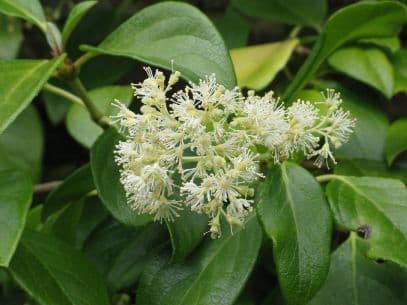
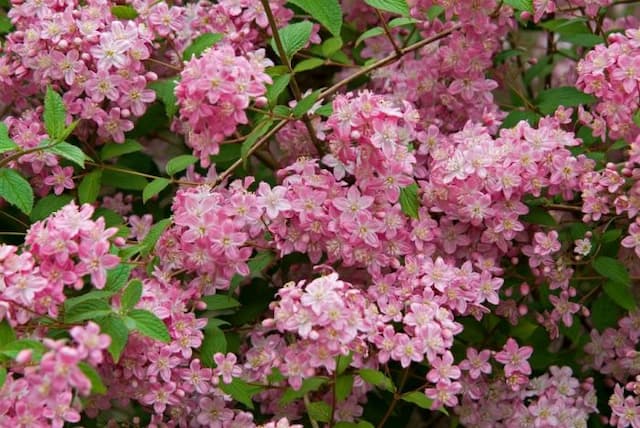
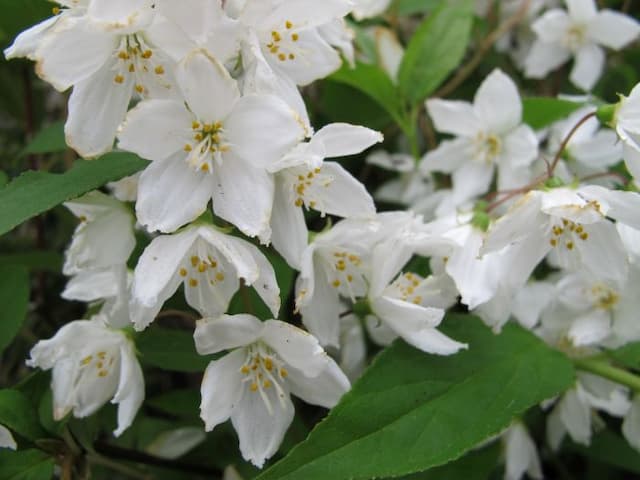
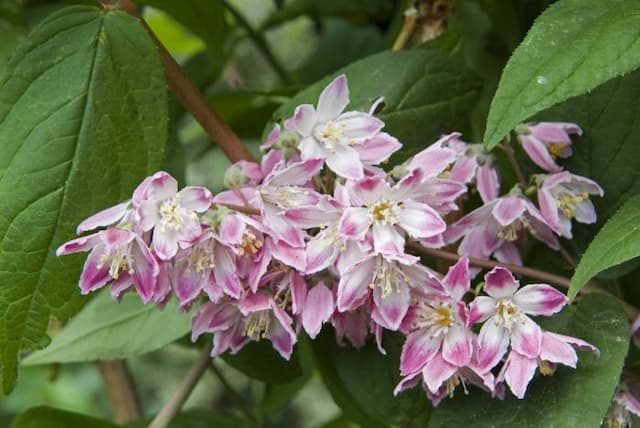

![Rose deutzia [Yuki Cherry Blossom]](/_next/image?url=https%3A%2F%2Fplants-admin.emdemapps.com%2Fimages%2Fplants%2F%2Fimages%2F604b6510a383a.png&w=640&q=75)
![Hydrangea [Hot Chocolate]](/_next/image?url=https%3A%2F%2Fplants-admin.emdemapps.com%2Fimages%2Fplants%2F%2Fimages%2F604b5a066e3bd.png&w=640&q=75)
![Hydrangea [Blackberry Pie]](/_next/image?url=https%3A%2F%2Fplants-admin.emdemapps.com%2Fimages%2Fplants%2F%2Fimages%2F604b56e2abc1d.png&w=640&q=75)

